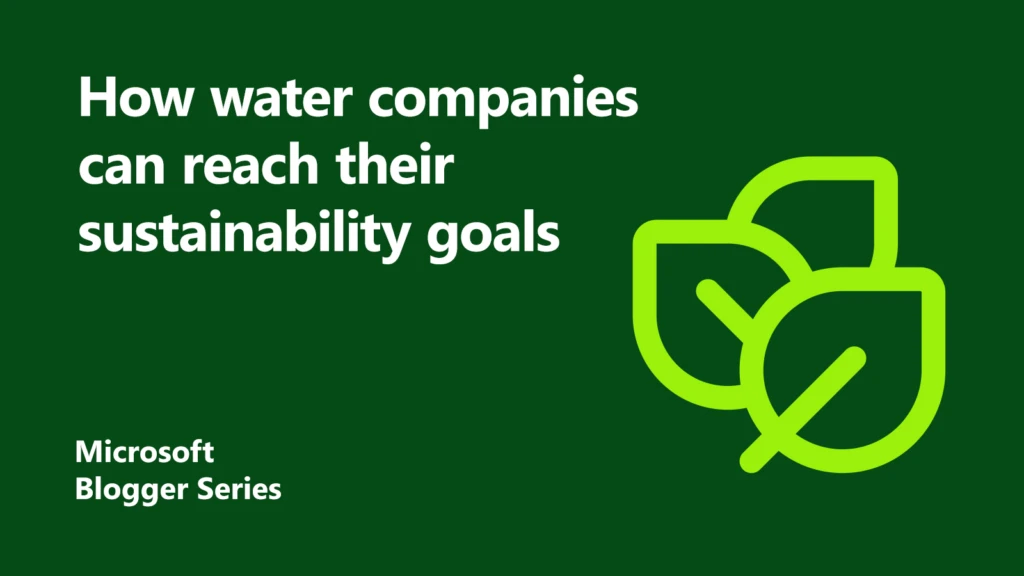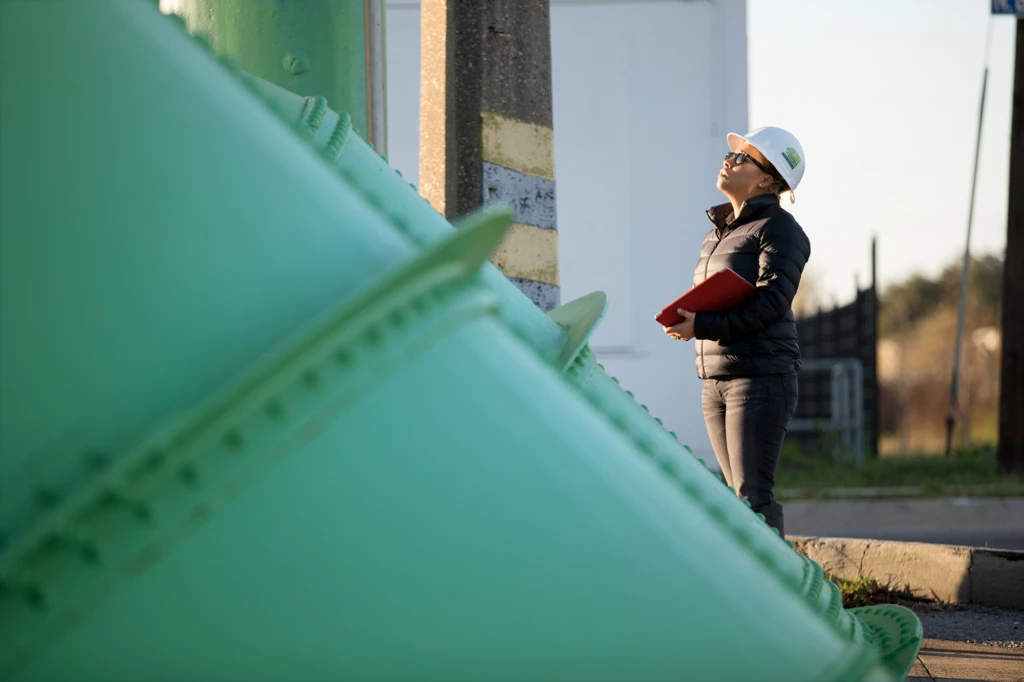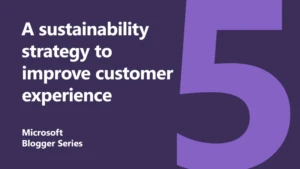
How water companies can reach their sustainability goals through digital modernisation
 In our second article examining the key priorities for the UK water sector, we take a deeper dive into the topic of sustainability. Sustainability is increasingly at the heart of strategy, customer and regulator expectations for UK water companies. It affects organisations from customer engagement and operations to capital delivery and organisational purpose, all of which can be optimised through better use of data.
In our second article examining the key priorities for the UK water sector, we take a deeper dive into the topic of sustainability. Sustainability is increasingly at the heart of strategy, customer and regulator expectations for UK water companies. It affects organisations from customer engagement and operations to capital delivery and organisational purpose, all of which can be optimised through better use of data.
The English regulator has stated that “the solutions of the past will not be enough to continue to deliver the services of the future.” Amid this, there is also uncertainty about levels of demand, changing weather patterns, population growth, lifestyle and demographic shifts. For the current regulatory period, the Water Industry Commission for Scotland has already adopted the principles of Ethical Business Regulation.
As we work to build back better and reduce our impact on the world, the water sector must not wait to act. It must find better ways of doing things and must start looking for solutions now. Here we review the broader landscape of opportunity for insight-led sustainability in the water sector and five areas of consideration.
Water companies need to build technology partnerships
 Last month, we discussed how the water industry could learn from oil and gas as it reinvents itself. Emerging technology such as analytics, AI, IoT, machine learning and smart metering have enormous potential to reduce utilities’ water footprint. Additionally, these technologies can improve productivity, cost-effectiveness and deliver remote solutions to hybrid and frontline workers. Fundamental to building sustainable approaches is the need to increase the use of digital technology, the alignment of water industry domain expertise with cross sector collaborations and the pursuit of a comprehensive internal reskilling/upskilling programme.
Last month, we discussed how the water industry could learn from oil and gas as it reinvents itself. Emerging technology such as analytics, AI, IoT, machine learning and smart metering have enormous potential to reduce utilities’ water footprint. Additionally, these technologies can improve productivity, cost-effectiveness and deliver remote solutions to hybrid and frontline workers. Fundamental to building sustainable approaches is the need to increase the use of digital technology, the alignment of water industry domain expertise with cross sector collaborations and the pursuit of a comprehensive internal reskilling/upskilling programme.
Partnering with transformation companies allows for collaborative innovation ecosystems to harness these emerging technologies and drive the sustainability agenda forward.
Reducing the leak lifecycle in water companies
For the current regulatory period, Ofwat has tasked water companies to cut leakage rates by 16 percent and reduce mains bursts by 12 percent. When comparing to the improvements demanded over the last decade, this is a quantum leap. Water companies cannot simply continue to pursue strategies that have struggled to deliver typically single-digit improvements in recent years. Harnessing data and analytics is key to meet these targets. Microsoft’s cloud technology provides the foundations for organisations like EY to analyse and visualise massive quantities of data collected by sensors and pumps. Combining that data with historical information enables proactive, predictive and even prescriptive maintenance scenarios.
We believe there are five key data and analytics capabilities water companies must establish to enable effective leakage management, and step-change operational performance:
1. Leak detection – accelerated awareness
By combining existing and long-standing data from SCADA sources with IoT and other distributed assets such as bulk meters and critical pressure points, water companies can analyse and understand pressure and flow anomalies in the supply network. Add in machine learning, and organisations can quickly identify and validate leak events. They can do this at a pace that is unrecognisable in comparison with enduring net nigh-time flow methods, which commonly require days or even weeks to elapse before catalysing on-the-ground investigations.
2. Leak location – increased accuracy
Knowing you have a leak is only part of the problem. To fix it you must first find it. Here, the opportunity is to extend the data landscape to incorporate operational maintenance, network asset and other open and acquired datasets such as weather, soil type, council works registers, CCTV networks, utility groundworks datasets and even satellite image data. Additionally, there is substantial value and insight in establishing a segmented view of network ‘leak propensity’. In our experience, this vastly accelerates the ability of on-the-ground leakage teams to pin-point leaks up to 70 percent faster and significantly reduce the number of interventions resulting in dry holes.
3. Intervention optimisation – enabling a digital workforce
With faster leak detection and more accurate leak location, you can rapidly make risk and priority-based decisions for human or automated job ticketing and allocation. Coupled with field-force digital enablement that combines engineers with location and asset information, the latest information is placed directly in the hands of on-the-ground teams for faster, smarter and better-informed decisions and outcomes.
4. Network pressure – limiting collateral damage
With a focus on reducing service interruption and improving customer service, the rapid post-repair re-pressurisation of the network can often lead to destabilisation of other vulnerable assets in the area. This can create a domino-effect of leak repairs causing further outbreaks. Automated pressure balancing is increasingly common. However, to reduce destabilisation, the speed and level of recommissioning a post-repair segment of the network plays a significant role. Taking an insight-led approach over an extended period can provide support in post-repair decision making; further reducing unwanted additional leak events.
5. Network renewal – better targeting capital investment
Traditional water and wastewater utility systems are not built for the dramatically changing stresses of climate change and rapid urbanisation. Typically, less than half of one percent of the underground asset network is replaced annually. Putting that into context, it’ll be around 200 years before the current network is refreshed in full. Yet the average pipe lifespan is considered to be around 30 years. The risk that this aging infrastructure brings – both in terms of potential failure and poor environmental compliance – is a key concern for water utilities and highlights the opportunity to embrace digital modernisation.
Therefore, an effective asset replacement strategy is informed by clearly understanding network condition and weak points. The insights common to leak detection and location can be applied with equal success to drive condition-based network replacement priorities and associated value for operational KPIs.
EY has worked with several UK water companies and have extended practical experience creating and implementing analytics-driven solutions including leak detection. In our experience, organisations pursuing an analytics-led augmentation of leak management processes can achieve:
- 25-50 percent reduction in leak awareness lead times
- Up to 70 percent precision in identifying DMA leak locations
- Up to 75 percent reduction in leak location duration
- Over 10 percent reduction in severity of I2S leakage impacts
Adapting operations and demand for efficiency and energy cost reductions
 Approximately half of typical water companies’ energy spend relates to pumping clean and wastewater. Yet, many pumping head operations continue to run at fixed and highly conservative schedules aligned to peak demand.
Approximately half of typical water companies’ energy spend relates to pumping clean and wastewater. Yet, many pumping head operations continue to run at fixed and highly conservative schedules aligned to peak demand.
EY found that using demand insights to optimise pumping head operation can reduce the volume and cost of energy. At the same time, it negates the impact of Triad and other punitive tariffs. Software running on Microsoft Azure’s highly scalable Platform as a Service (PaaS) optimises pumping head daily schedules. This allows them to meet customer demand while aligned to operational, safety, regulatory and water quality constraints. As a result, there were significant energy cost reductions for optimised pumping stations enabled by the integration of demand insights across seasonality, weather and external events, using advanced analytics and AI.
In our experience, organisations pursuing an analytics-led approach to clean water pumping optimisation can achieve on average:
- 1-5 percent reduction in energy consumption
- 20 percent average reduction in energy costs
These digital solutions for improved sustainability outcomes are a result of innovation ecosystems and collaborative approaches. For instance, a team from Microsoft, alongside data experts, conducted a water leakage hackathon as part of Northumbrian Water’s Innovation Festival. Analysts worked on data relating to leaks, soil types, water pressure, pipe materials and other elements that impact the likelihood and location of leaks.
Business sustainability in water companies
Sustainability is not just a subject for now. It also means investing for the future and beyond. Today, water companies have spent the bulk of sustainability investment on ODI targets and carbon reduction. They’ve focussed on the operational efficiency of assets and the workforce, leakage, and reducing environmental impact. However, we are already seeing many organisations seriously look to the future. These organisations are developing new business models that drive new revenue streams and business diversification. This is in addition to broader factors around process lifecycle emissions, operational and supply chain circularity, and community engagement.
Historically sustainability innovation initiatives have been more science projects or POCs. This is changing with a transition targeting new profitable sustainable business models and business diversification.
For example:
- Sewage sludge extraction can provide a large part of the nitrogen and phosphorous for crop production.
- Recovering ammonia from wastewater and turning it into green hydrogen fuel.
- Turning heat recovery from purification process into energy.
- Making fertiliser products from production carbon exhaust.
- Creating oxygen for commercial sale from sustainable hydrogen electrolysis.
- Extracting cellulose from the waste stream.
In addition, newer technologies such as AI and digital twins provide more efficient and sustainable ways for the industry to plan, model, simulate, and operate.
Building collaborative innovation ecosystems in water companies
 As Ofwat increased sustainability standards in PR19, so did the estimation that the UK will need an extra 3.4 billion litres of water daily between 2035 and 2050.
As Ofwat increased sustainability standards in PR19, so did the estimation that the UK will need an extra 3.4 billion litres of water daily between 2035 and 2050.
Human-managed water systems degrade as they’re used. Circularity has the potential to achieve resource efficiency, reduce waste production and to improve environmental, economic and social sustainability. This can be achieved in the transition of wastewater treatment plants to resource recovery facilities, to recover materials and energy. Additionally, circularity can enhance resources via the use of alternative water sources such as rainwater or stormwater harvesting.
This restructuring is an opportunity for UK water companies to be a beacon for sustainability. They can drive progress in the water sector worldwide as we collectively push towards UN Sustainable Development Goals. However, for there to truly be a sustainability revolution in the water sector, we need to collaborate. This is not just between utilities, but regulators, transformation companies and other stakeholders as well. By working together, water companies can improve environmental performance, keep their assets safer, reduce costs, and deliver greater efficiencies.
Therefore, collaboration with transformation companies can play a key role. The right insights at the right time can put utilities on a path to reduce water usage and reach their customer service and sustainability goals. At the same time, technology has become more accessible, with the cost of tools like AI, IoT and smart devices decreasing. There has never been a better time to take a great leap forward to achieve a true digital transformation. Together, we can create a resilient, digital water utility for the future that embraces sustainability.
Find out more
Intelligent Energy Management Systems
Microsoft’s commitment to sustainability
Resources to empower your development teams
Sustainable software engineering
About the authors
 Rik joined Microsoft at the start of 2020, with responsibility for Microsoft’s strategy across manufacturing, energy and resources in the UK. He is Microsoft’s lead when working with regulators, industry bodies, industry partners, and our largest customers to ensure Microsoft enables the needs of industry. Since joining, Rik has become a board member in techUK’s Smart Energy & Utilities working group, techUK’s Digital Twin steering board, UK Research & Innovation Manufacturing Made Smarter board, and the BIM4Water Digital Skills steering group. Prior to Microsoft, Rik worked at Cisco for 13 years, with global lead roles in energy and resource industries, IoT and security, and digital transformation.
Rik joined Microsoft at the start of 2020, with responsibility for Microsoft’s strategy across manufacturing, energy and resources in the UK. He is Microsoft’s lead when working with regulators, industry bodies, industry partners, and our largest customers to ensure Microsoft enables the needs of industry. Since joining, Rik has become a board member in techUK’s Smart Energy & Utilities working group, techUK’s Digital Twin steering board, UK Research & Innovation Manufacturing Made Smarter board, and the BIM4Water Digital Skills steering group. Prior to Microsoft, Rik worked at Cisco for 13 years, with global lead roles in energy and resource industries, IoT and security, and digital transformation.
He has an MBA in international leadership and is currently studying for a Masters in Green Economy.
 Mark is a director of Ernst & Young’s insight-led transformation services in the UK. He also leads business development for the UK data and analytics practice and is an analytics subject-matter expert for the UK power and utilities sector. He works across all sectors with a focus on UK power and utility clients providing services in support of insight-led operational optimisation.
Mark is a director of Ernst & Young’s insight-led transformation services in the UK. He also leads business development for the UK data and analytics practice and is an analytics subject-matter expert for the UK power and utilities sector. He works across all sectors with a focus on UK power and utility clients providing services in support of insight-led operational optimisation.





